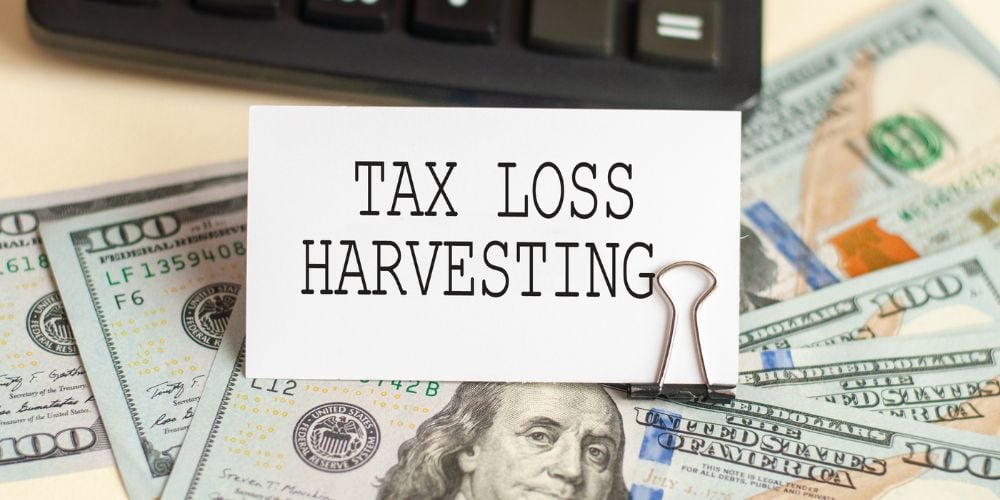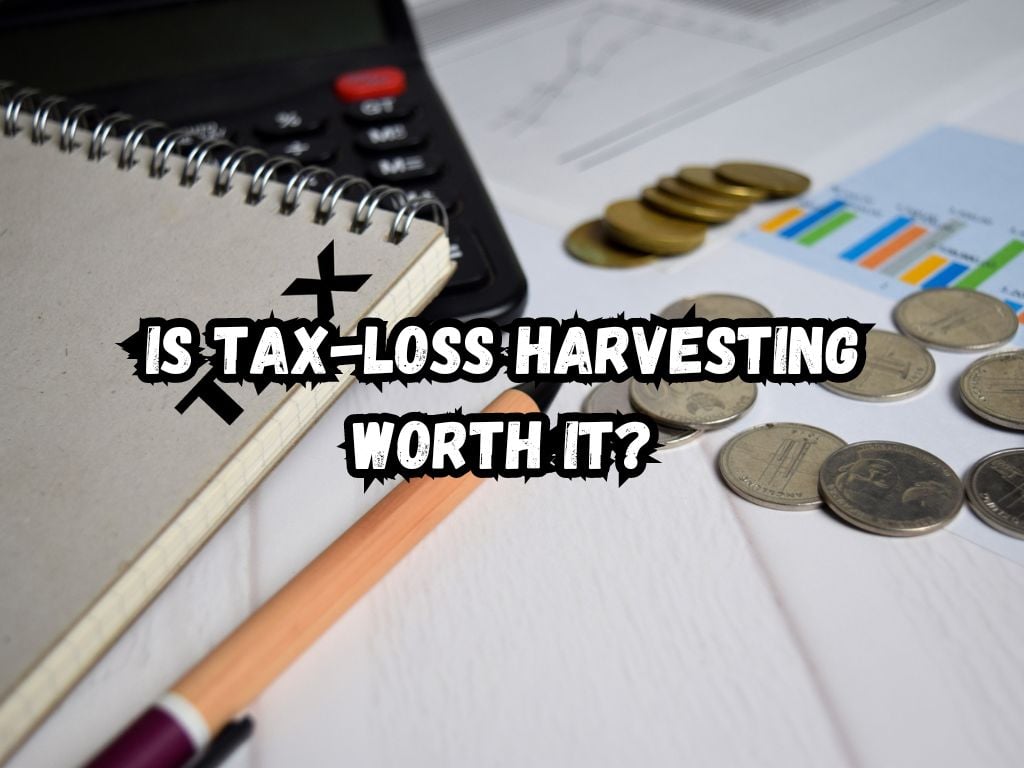Investors often look for strategies to optimize their portfolio performance and minimize tax liability.
One popular method is tax-loss harvesting (TLH), a strategy that can seem complex but offers significant financial benefits if used correctly.
But, is tax-loss harvesting worth it?
This guide delves into tax-loss harvesting, exploring its advantages, drawbacks, and suitability for different investors.
What is Tax-Loss Harvesting?
Tax-loss harvesting is a method where investors sell securities at a loss to offset a capital gains tax liability. This strategy is applicable in taxable investment accounts.
The basic idea is straightforward: by selling an investment that has decreased in value, an investor can offset the gains from other investments, thereby reducing their overall taxable income.

Is Tax-Loss Harvesting Worth It?
One major benefit of tax-loss harvesting is the reduction of taxable income. For instance, if an investor realizes a $5,000 gain in one part of their portfolio but offsets it with a $5,000 loss elsewhere, the gain is neutralized for tax purposes.
This mechanism can help maintain a more efficient tax rate across the investment timeline. Another advantage is portfolio optimization.
By routinely removing poorer-performing investments and potentially reinvesting in stronger prospects, investors can solidify their portfolio’s health and future potential.
Lastly, tax-loss harvesting can offer psychological comfort by enabling investors to take actionable steps during market downturns.
This proactive approach can help investors feel they are creating opportunity out of a negative market event.
Drawbacks and Considerations
However, there are drawbacks and key considerations. One significant issue is the potential lowering of an investment’s cost basis.
When you replace a higher-cost security with a lower-cost one, future gains will likely be larger, possibly resulting in higher taxes later. The wash-sale rule also plays a critical role.
This IRS rule prohibits taxpayers from claiming a tax deduction for a security sold at a loss if a “substantially identical” security is purchased within 30 days before or after the sale. This rule is intended to prevent taxpayers from abusing TLH.
Moreover, TLH may not be suitable for all types of investment accounts or for investors whose tax situations do not advantageously align with the strategy, such as those in lower tax brackets or those who primarily hold tax-advantaged accounts like IRAs.
Who Benefits Most from Tax-Loss Harvesting?
The benefits of tax-loss harvesting vary among investors. Those in higher tax brackets usually find the strategy more beneficial as it can offer significant tax relief.
Investors who hold individual stocks, exchange-traded funds (ETFs), or mutual funds also stand to benefit because these assets often have ample opportunity for price fluctuation, thereby providing moments suitable for TLH.
Investors with a long-term focus might also see pronounced benefits as they have more periods in which they can harvest losses and more opportunities for compensating gains.
Case Studies and Examples
Consider an investor who bought shares in a tech company at a high, only to watch their value plummet within a few months.
Through tax-loss harvesting, this loss could be, and indeed was, used to offset gains from other sectors, maintaining the investor’s portfolio in balanced tax standing.
Conversely, an investor with a low-cost basis stock who employed TLH without considering future appreciation, later faced higher taxes on those substantial gains.
This scenario highlights the pitfalls — TLH must be handled with care and foresight.
How to Implement Tax-Loss Harvesting?
Implementing tax-loss harvesting involves a disciplined strategy. It requires keeping excellent records of purchase prices, sales, and the timing of transactions.
Investors must monitor their portfolio regularly to identify loss harvesting opportunities without flouting the wash-sale rule.
Certain tools and services can automate some of these processes, tracking investments and calculating potential tax impacts.
These can serve as invaluable aids in making informed, timely decisions in a dynamic market.

Pro Tips and Best Practices
Before engaging in TLH, investors should consult with a tax professional or financial advisor. This ensures that the strategy aligns with broader financial goals and tax planning strategies.
Regular reviews and adjustments of one’s investment portfolio in line with current tax laws will also maximize the benefits of tax-loss harvesting without stepping into avoidable pitfalls.
Frequently Asked Questions
Is tax-loss harvesting beneficial for investors in low tax brackets?
For those in lower tax brackets, the direct tax benefits might be less striking. However, the strategy can still provide portfolio optimization benefits.
How does tax-loss harvesting affect long-term capital gains?
It can defer them, potentially leading to a larger tax liability in the future, which investors need to manage cautiously.
Can tax-loss harvesting be automated?
Yes, several investment tools and financial services now offer automated tax-loss harvesting, providing a hassle-free way to apply this strategy.
Conclusion
Tax-loss harvesting is a powerful tool in the savvy investor’s arsenal but requires careful consideration and implementation. It is most beneficial for those in higher tax brackets or with significant non-sheltered investments.
While not universally applicable, in the right situations tax-loss harvesting can serve to enhance an investor’s fiscal health and investment outcome.
By educating themselves and potentially seeking professional advice, investors can make the most out of tax-loss harvesting, turning potential losses into strategic gains.


 Tags:
Tags:










